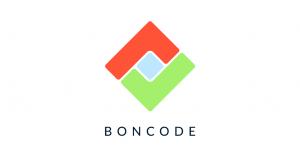Many large organizations perform code analysis on their custom software. In fact, with multiple software projects running at any one time, measuring code quality and visualizing it via dashboards is becoming a standard practice.
But if that’s all you’re doing with your source code analysis tooling, you’re only getting half the value. To put it another way, you’re only leveraging half the potential of your tooling. The missing half? Improved project management.
The hidden advantage of source code analysis
Analysis tools (like BonCode’s BonCat platform) assess the technical quality and the technical debt of source code and provide feedback to the architects and engineers who produced it.
Take this basic example. Let’s say you have three software projects being monitored on a daily basis over the course of a few months. The simplest metric or trend you can measure over time is the number of lines of code.
Let’s imagine you generate a graph showing these results:
- One project has a flat line – a horizontal line with no spikes.
- The second project has a steadily increasing number of lines of code over time.
- Project three has peaks and troughs in the volume of code added.
Which project is the most productive?
The first result suggests that no development is taking place! The second suggests a ‘waterfall’ approach to development. The third indicates that refactoring and maintenance are happening alongside the development of new feature, helping to improve the overall code quality.
Here’s another example. Imagine you have one central database connected by an enterprise service bus to multiple projects. Source code analysis can measure all these projects, as well as the complexity of the service bus itself.
What we sometimes see is the projects themselves are low complexity and steadily growing, while the middle layer – the service bus – becomes more and more complex and unmaintainable. Code analysis surfaces a hidden threat to business continuity that needs addressing before it can do lasting damage.
Unlock actionable insights and cost savings
Here’s the thing: management don’t want to go deep into the technical details of source code analytics. What they need are independent fact-based insights that they can understand. Having a shared language around quality enables technical teams to talk about software quality in a way that’s meaningful to the business.
Facts on software quality over time help organizations catch issues early. The earlier you do so, the easier and cheaper it is to fix them. At the same time, getting that continuous insight into code quality helps ensure development deadlines are met, and technical debt is handled before it becomes a hindrance.
Used as an early-warning system, source code analysis is a valuable tool for monitoring the progress of a portfolio of projects. It facilitates better foresight and planning at every level and improves communication between people in technical and non-technical roles. Ultimately, this leads to clearer oversight of project development and deliverables.
Discover what BonCode’s consultancy-driven solutions for assessing and monitoring source code quality can do for your business. Book a demo or chat to one of our quality experts today. Contact us





